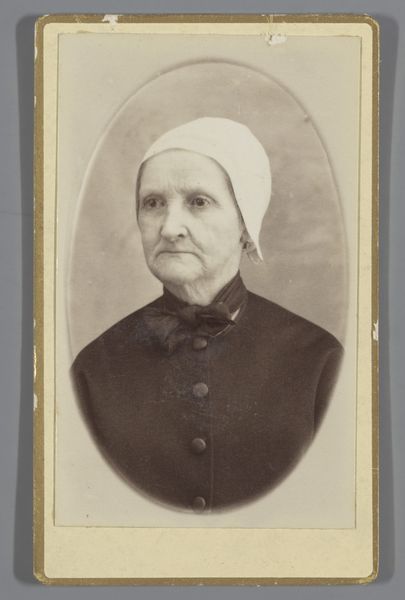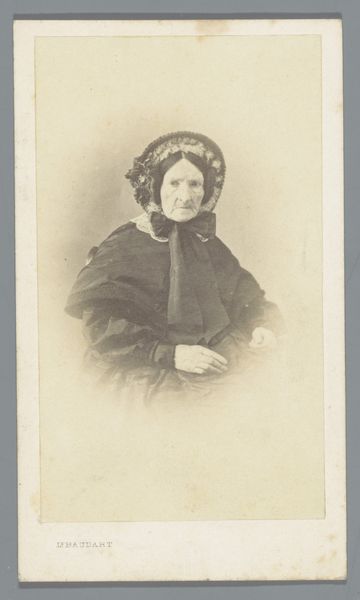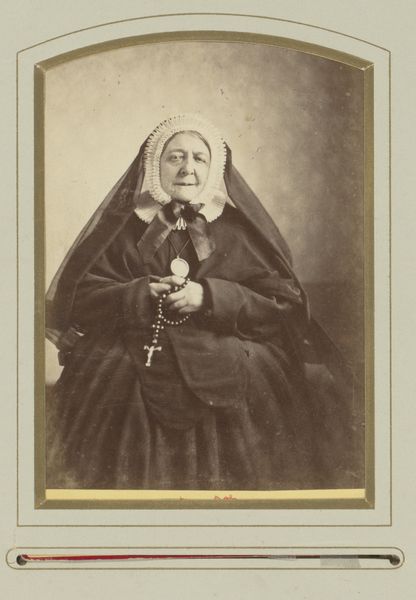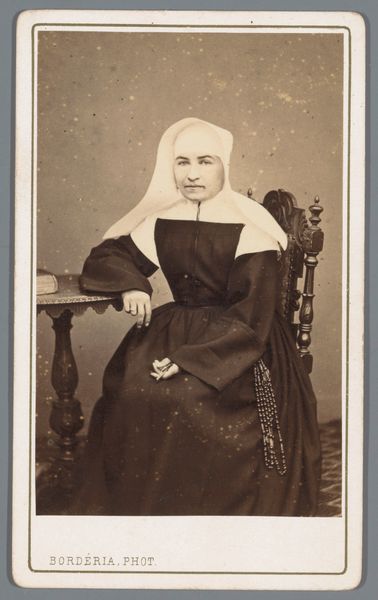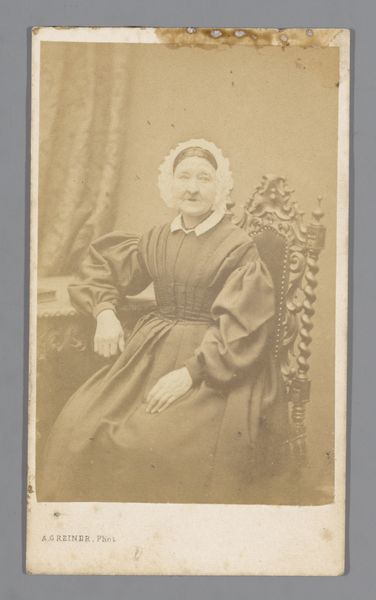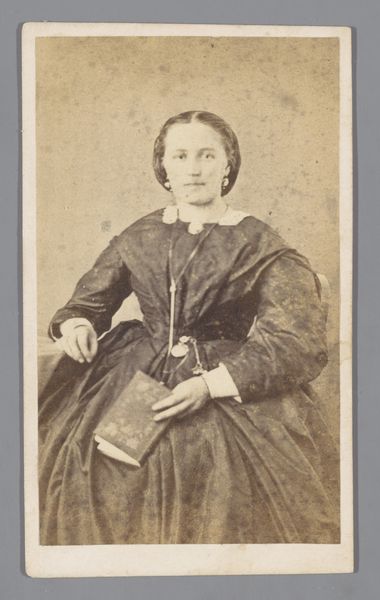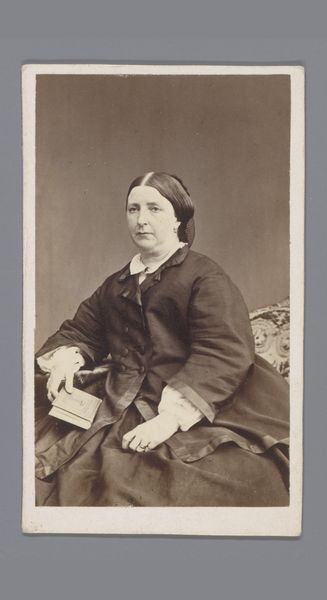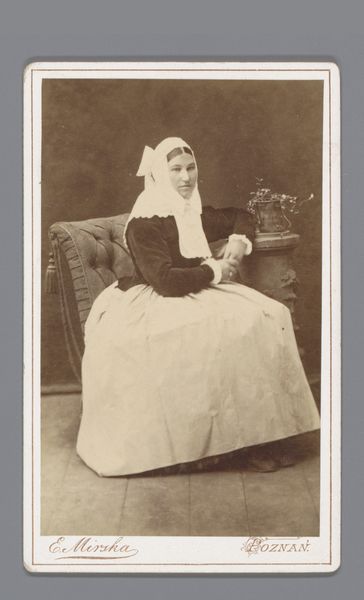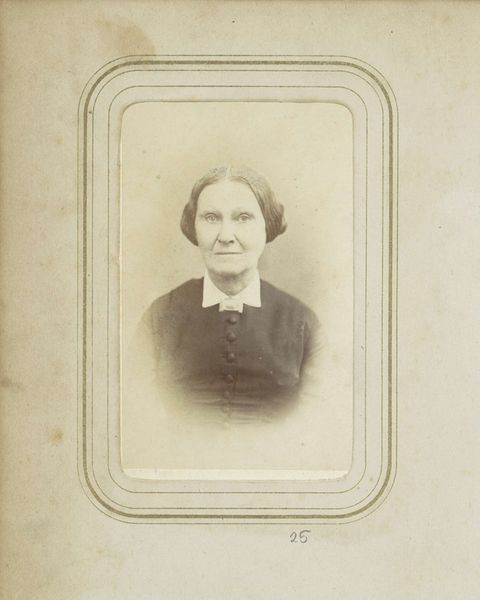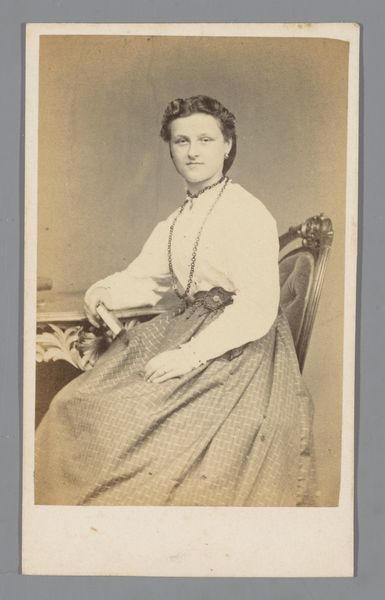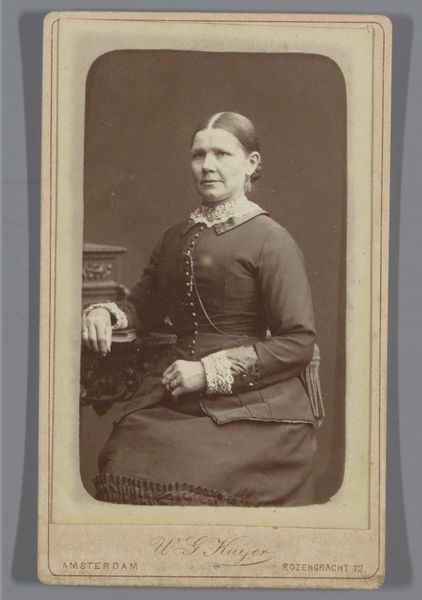
Dimensions: height 99 mm, width 59 mm
Copyright: Rijks Museum: Open Domain
Curator: This photograph, entitled "Portret van een onbekende oude vrouw", translating to "Portrait of an Unknown Old Woman," was produced sometime between 1865 and 1880 by Otto Pettersson & Co. Editor: The photograph has an incredibly subdued tonal range, evoking a sense of profound solemnity and timelessness. Curator: Indeed. Note the intricate details captured within the frame, the deliberate construction of light and shadow that articulate the subject's facial features. Observe also how the head covering, immaculate and striking against the simpler dark clothing, serves to concentrate attention. Editor: Speaking of the garments, I am struck by the clear demonstration of skilled labour represented. It invites a deeper consideration of the material conditions that made possible both the photographic practice and the woman’s life circumstances during the era. What labour was necessary to produce these articles of clothing, and how does that contrast with its perceived simplicity? Curator: The medium, too, offers insight into societal function, with photography beginning to proliferate in the mid-19th century; here we see a moment captured and rendered permanent. Furthermore, there is the technical ability to master this complex medium—photography offered new opportunities for those like Pettersson, and by considering such portraits, the development of studio practice is unveiled. Editor: I agree, the choice to capture and disseminate this image by Pettersson—the very means of distribution—informs us on how certain aesthetics of that era were both created and celebrated. Consider also the economics of that labour, especially within the domestic sphere—its effects cannot be understated. Curator: Considering how the composition leads the eye, this close study invites a reflection upon the photograph's formal power and also suggests narrative possibilities for the attentive observer. Editor: It is in these details that a social story is presented; an examination of technique, labour and material—inviting dialogue and contemplation regarding her era. Curator: Precisely. By uniting formalism and material examination, we allow greater understanding and the unfolding of social reflection. Editor: Indeed, this union, I believe, offers invaluable avenues for us to meaningfully explore both aesthetics and social insight in this enduring form.
Comments
No comments
Be the first to comment and join the conversation on the ultimate creative platform.
